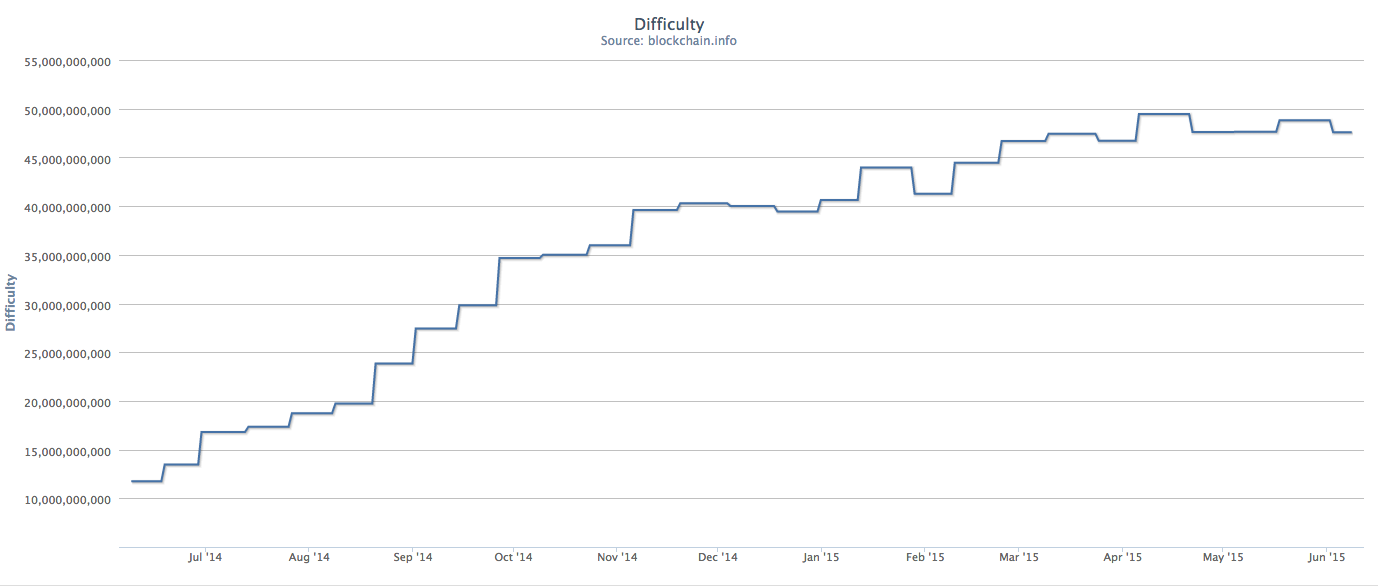The best way to think about Bitcoin difficulty is to view it as the maximum amount of computing power it will take to find a particular block reward. The difficulty number is what helps keep the Bitcoin block time at around ten minutes. As more hashing power is added to the network from different computers around the world, the difficulty of finding a block needs to be adjusted accordingly. If there was no mechanism for regulating the amount of hashing power it will take to mine a particular block, then it would be impossible to effectively secure the blockchain.
How is it Regulated?
The difficulty of mining a particular Bitcoin block changes over time to make sure that it does not become too easy or too difficult to mine bitcoins. As more hashing power is added to the Bitcoin network, it becomes more difficult to mine bitcoins. Difficulty is recalculated every 2016 blocks, which usually turns out to be roughly every two weeks. After every 2016 mined blocks, the Bitcoin difficulty is readjusted based on the speed at which the previous 2016 blocks were mined. It is possible for the difficulty to decrease, but this has only happened on rare occasions where the hashing power on the network has also decreased.
How is Bitcoin Difficulty Calculated?
When Satoshi started to mine the first blocks on the Bitcoin blockchain, the difficulty of mining those blocks was 1. The Bitcoin difficulty can never drop below 1. The timestamps of every 2016 blocks are compared to figure out whether or not the difficulty of finding the next 2016 blocks will need to be altered. These adjustments are made to make sure it always takes roughly two weeks to find the next 2016 blocks. For example, the difficulty would need to be increased by 40% if it took ten days to mine the last 2016 blocks.
Using Difficulty in Mining Expectations
Bitcoin difficulty is one of the key factors to consider when investing in any kind of Bitcoin mining system. Although you can use the current difficulty level to estimate your total share of block rewards until the next difficulty adjustment, it becomes quite difficult to correctly predict what the Bitcoin difficulty will be only a few months into the future. Adjustments made to the Bitcoin difficulty over time are one of the main reasons that waiting for Bitcoin hardware deliveries have been such a disaster in the Bitcoin community. The difficulty of mining on the Bitcoin network tends to increase over time, so even a few weeks can cut the project profits earned from a particular piece of mining hardware by more than 25%. One of the main benefits of mining bitcoins on a platform such as CEX.IO is that you’re able to get instantly delivery of your share of mining power on the GHash.IO mining pool.
